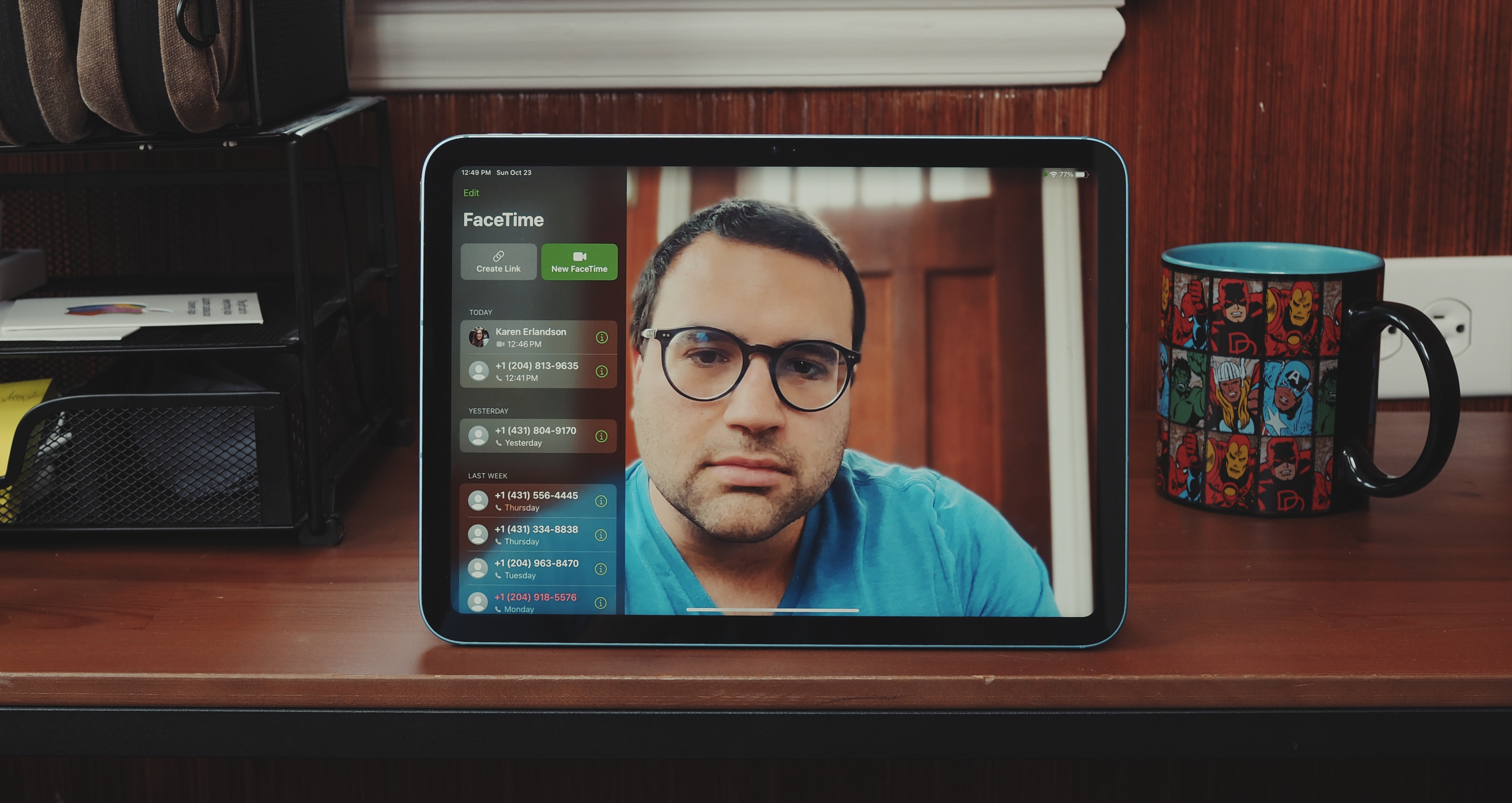iMore Verdict
The iPad (2022) refreshes the standard iPad to the current design we've seen grace the iPad Air and iPad Pro for a few years, and for the most part, the change is fantastic. The screen is larger, the cameras are better, the processor faster, and it's the best the base iPad has ever been. But its debut is slightly marred by some baffling design decisions -- and a price that throws the entire iPad lineup into chaos.
Pros
- +
New 10.9-inch display
- +
Updated to meet Apple's current iPad design
- +
The rear camera is actually useable
- +
The front-facing camera is in a better location
- +
Cheaper than the iPad Air with many similarities
Cons
- -
Non-laminated display
- -
Ridiculous dongle to charge Apple Pencil
- -
Significant price increase over the iPad (2021)
You can always trust iMore.
The iPad is an icon, the most popular tablet in the world and a product with a long history of success for Apple. While the company added new models along the way — like the mini and Air — the standard iPad remained stalwart in its position as the familiar, reliable, barebones Apple tablet experience.
For its tenth iteration, Apple has tried to make somewhat of a second coming for the iPad. The base iPad no longer has to hide in the shadow of its contemporaries but instead has a chance to shine all on its own.
The iPad (2022) is a welcome change from the stagnant design of the iPad for the past decade, but that change comes with growing pains for both old and new users alike. A new price point that makes it sit awkwardly in the middle of two other iPads and some confusing design choices by Apple does sour the otherwise triumph reimagining of the iPad.
iPad (2022): Price and availability
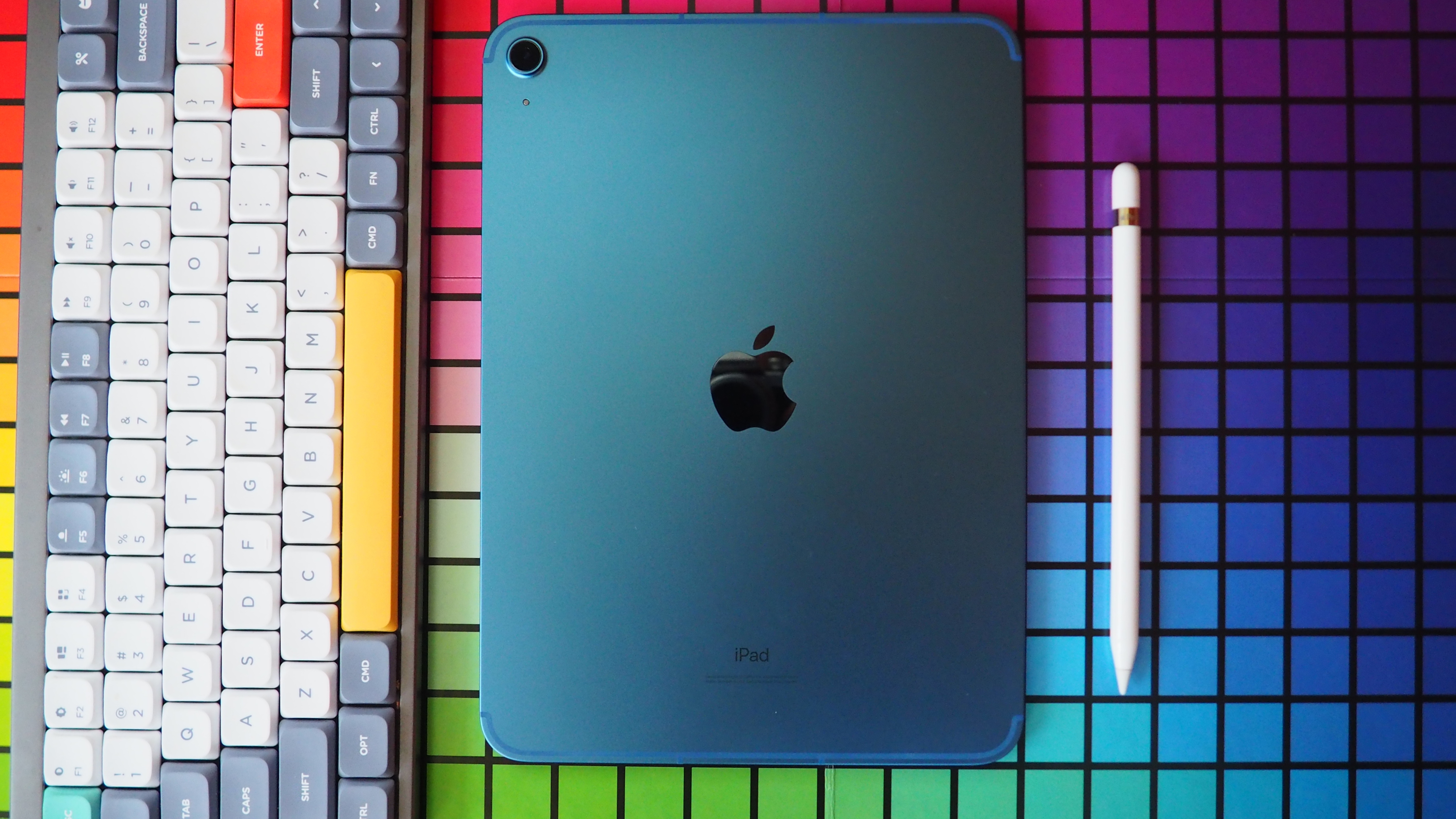
The iPad (2022) is technically replacing the 9th-gen iPad, but you wouldn't know it considering the price.
The new 10th-gen iPad now starts at $449 for only 64GB of storage, although you can pay an additional $150 for the 256GB model. The tablet is available in four colors: silver, pink, yellow, and blue, and it's compatible with the first-generation Apple Pencil — a $99 add-on. Cellular models are $599 and $749 respectively, bringing 5G to the table.
The new iPad is available for pre-order at several retailers (Apple, Amazon, Best Buy, etc.), but its official release date is October 26, 2022. Apple and various retailers offer financing options including monthly payments and contracts.
iPad (2022): Hardware and design
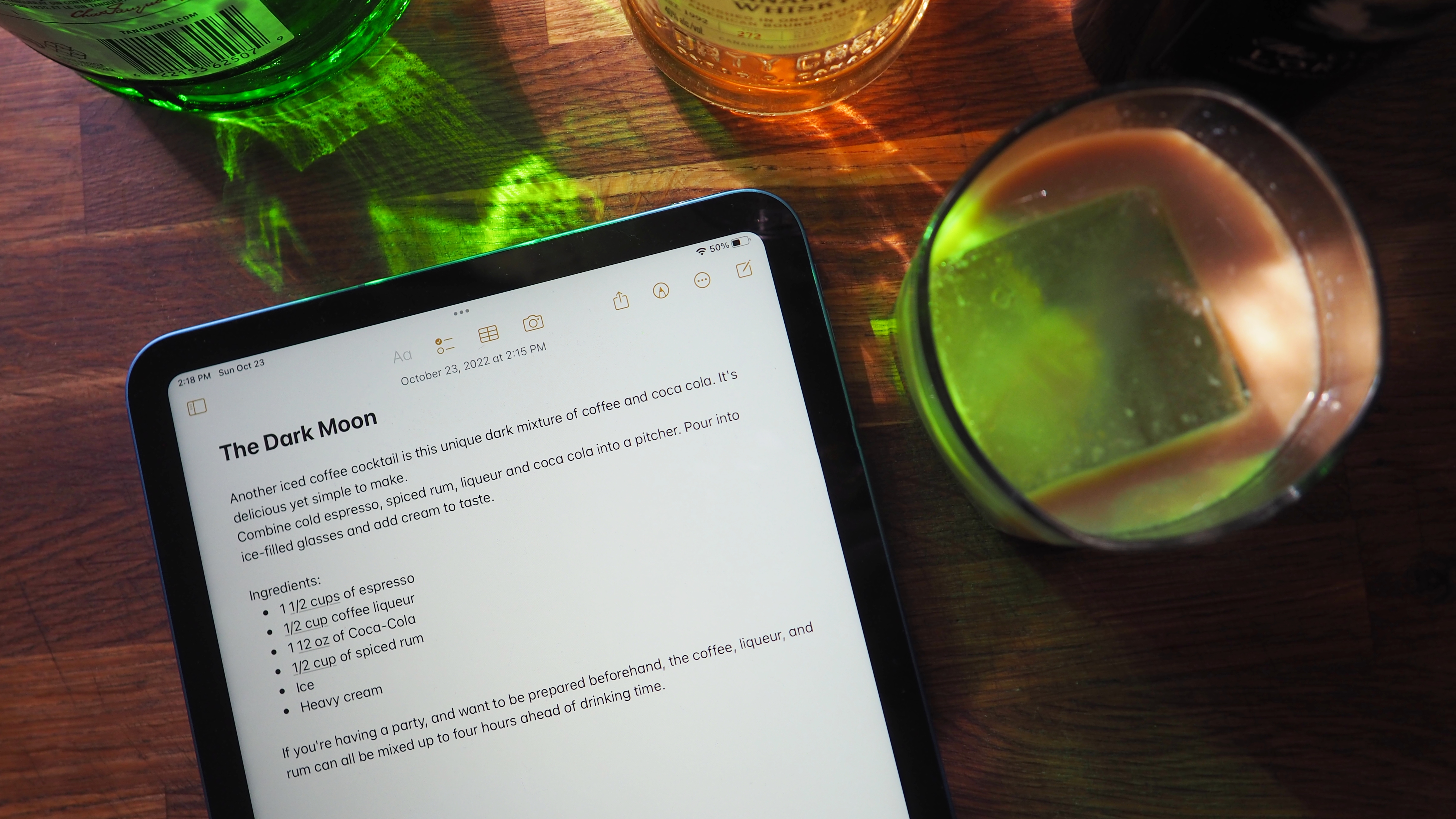
Apple has finally given its massive iPad redesign to the base iPad we've seen on the iPad Pro and iPad Air before. They ditched the bezels, rounded the corners, said goodbye to the Home button, and even ditched the Lightning port in favor of USB-C, all changes welcome to a design that hadn't received much love from the company since its inception.
The new 10.9-inch Liquid Retina Display is a pleasant surprise on the iPad and is nearly as good as the screen on the iPad Air 5. It isn't laminated, though, meaning there is that familiar hollow sound when you tap on the screen, a strange thing not to update since Apple went to the trouble of redesigning the entire thing anyway. I would likely suspect this is a cost-cutting measure for Apple to keep the price down. Still, I can't say the display doesn't look great because watching Netflix, playing games, and everything else on this iPad has been a pleasure. The screen's lack of an anti-reflective coating means the screen is much more prone to glare. Plus, when you add its max brightness of only 500 nits, it will be more challenging to see what's displayed on the screen in bright light conditions (particularly in bright sunlight). Keep in mind; this is no different than the screen on the previous 9th-gen iPad or iPad Air 5, so overall, it's not a big deal.
A non-laminated screen on an iPad in 2022 feels bad
The lack of a Home button may be a big deal if you upgrade from an older iPad, as you may have to learn how to navigate your iPad all over again. Swiping from the bottom of the display is how you access your app switcher, go back to the Home Screen, and navigate iPadOS 16. Most people will like this change, and I know I certainly do; however, remember the standard iPad has a wide-reaching audience, some of which have been using and loving the Home button for over 10 years. I wouldn't blame anyone who looks at the 10th-gen iPad with a bit of trepidation if they haven't used a device without that familiar little circle at the bottom. The good news is that if you love Touch ID, Apple didn't get rid of it this year; it has just moved to the Sleep/Wake button — like the iPad Air. It's fast and reliable, and when you authenticate enough fingers with it, it will feel just as seamless to use when you're handling your iPad in portrait or landscape orientation.
With all these changes, it's pretty easy to mistake the iPad (2022) for the iPad Air 5 at first glance, but when you look closer, there are subtle differences you'll notice.
The Smart Connector, which is used to attach all sorts of Peripherals and accessories to the tablet, is still in the same spot it was on the iPad (2021), not on the back of the iPad like the Air and Pro models. The new iPad is also just a tad heavier and bigger than the iPad Air 5, weighing about 1.05 pounds instead of 1.02 pounds. Of course, this difference is not noticeable in the least, and the iPad still feels light enough to hold in one hand when you need to, and if you throw it in your favorite bag or sleeve, it's not going to bog you down.
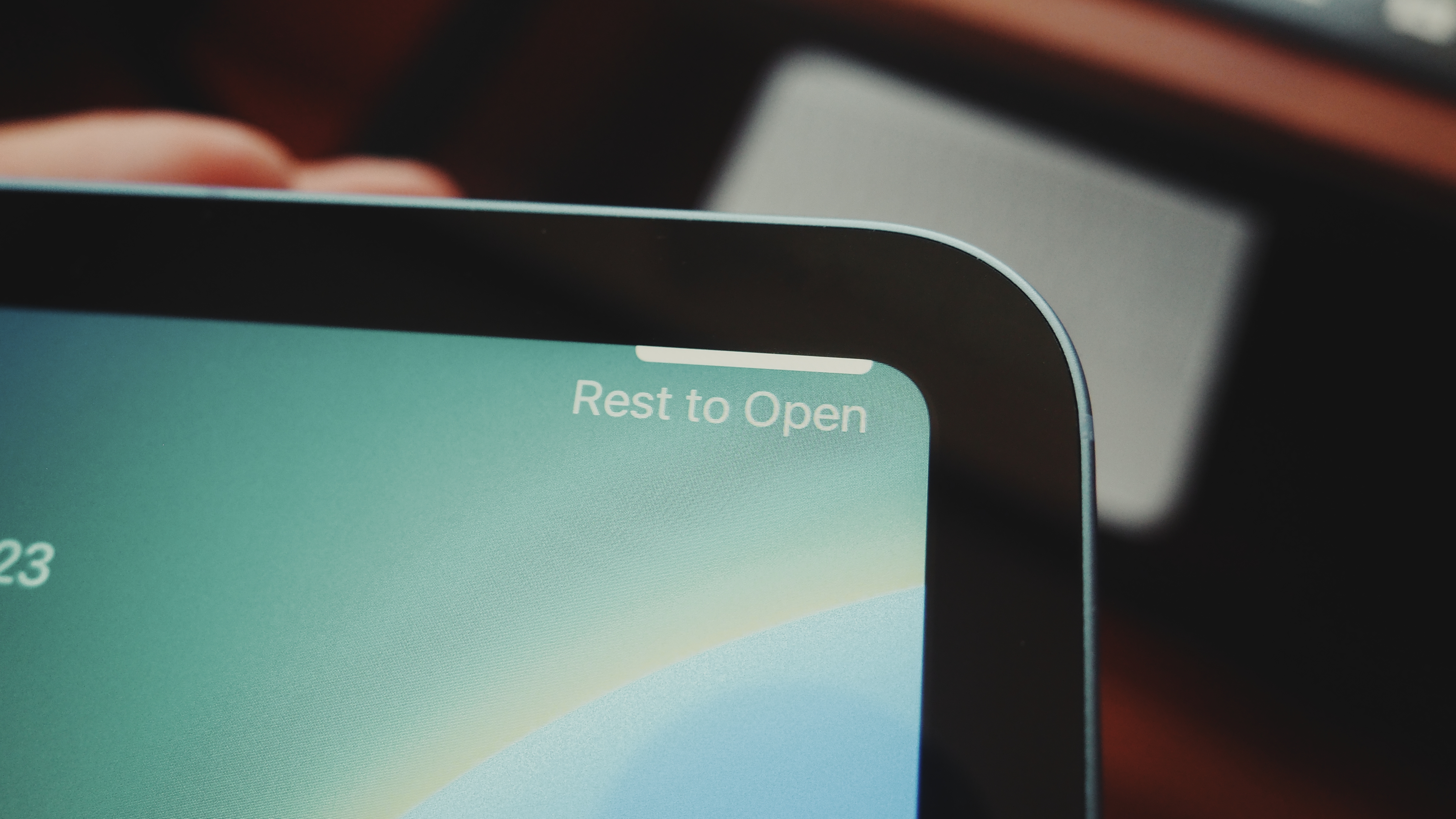
The lack of a headphone jack might give you pause if you are someone who hasn't embraced the likes of AirPods or other wireless headphones yet. While Apple Music is an absolute delight to use on an iPad, especially now that the dual-landscape speaker array is on par with what you get on the iPad Air, a headphone jack is necessary to really take advantage of Apple lossless. I'd imagine if you are a true audiophile, your iPad isn't the main way you listen to Apple Music anyways; however, this change could be a nuisance to someone who's used to watching lots of content on their iPad.
Apple notably didn't upgrade the storage options this year, which is a tad disappointing but not unexpected, as the iPad Air has the same options as well. The cheaper model comes with 64GB onboard, or you can choose to pay an extra $150 to bump up the storage to 256 GB. Without upgraded storage capacities, the USB-C port likely becomes essential for some people. The 10Gbps transfer speeds that the new port allows will be crucial in transferring bigger files from your iPad onto one of the best external hard drives for iPad, something the old Lightning port just wasn't great at accomplishing. Another significant upgrade to the base iPad line, although it has one major caveat; I'll talk more about that later.
USB-C helps mitigate the low storage options on the iPad 2022
Lastly, Apple has brought some exciting and vibrant colors to the iPad lineup, which typically has stayed away from color. The four options are silver, pink, yellow, and blue. I have the blue colorway, and it's noticeably more saturated than the color offerings they provided to the iPad Air line. I imagine the yellow and pink colors would follow suit, so if you're craving richer hues on your iPad, you'll be happy here.
iPad (2022): Software and performance

Everyone and their dog wants to talk about Apple's chip — especially since the inception of the M-series chips that power their Macs and higher iPads. The good news is that the iPad (2022) comes with the A14 Bionic, an upgrade of the A13 Bionic found in the 9th-gen iPad. Apple states this brings a 20% increase in CPU and a 10% improvement in graphics when compared to the iPad (2021). How much you notice that difference will depend on how you use it. Lots of gaming, heavy photo editing, and light video editing will likely make you appreciate the extra power. Still, word processing, movie watching, and internet browsing probably won't feel significantly different with the new processor. Don't expect the 10th-gen iPad to do anything it's not meant to do — like heavy 3D modeling, for example — and you'll be pleasantly surprised with its performance. While using mine, apps have loaded quickly, gaming on MTG Arena has felt buttery smooth, and moving around iPadOS16 has felt seamless every time.
For 90% of iPad users, the A14 Bionic in the iPad (2022) will handle everything you need and probably still be able to do some things you don't care about. I know the focus on the M1 chip (or now M2 chip) found in the iPad Pro and iPad Air gets a lot of hype, but it really is overkill for most people. In fact, I have an iPad Air 5, and I tested it side-by-side with my new iPad, and I barely noticed a difference. The 10th-gen iPad seemed to handle everything I threw at it relatively easily, with no discernible dip in performance as I played several graphics-heavy games, sketched in my favorite drawing apps, surfed the web with many tabs open, and did some really extensive photo editing in Pixelmator Photo. The one time I saw a noticeable difference in performance between the M1 at the A14 Bionic was when I was mass-importing photos (wirelessly) from my Olympus camera to my iPad — the M1 was hands down faster in that instance. On top of that, the A14 Bionic would keep my iPad pretty cool while doing everything, but it did heat up a bit when you pushed it (like importing the photos), but not to a level that worried me. The M1, predictably, never made my iPad Air heat up to any noticeable degree.
The A14 bionic felt powerful enough to handle everything I threw at it.
While I am impressed with the performance of the A14 Bionic, there is something that it can't (won't) do because it doesn't have an M-series chip — Stage Manager. That's right, the now infamous Stage Manager available in iPadOS 16, which lets you have multiple grouped apps open and on the screen simultaneously, won't be coming to the iPad (2022). Instead, you'll be stuck with the same Split View and Slide Over we're used to seeing on the iPad. So, if Stage Manager does look appealing to you, the 10th-gen iPad won't be the tablet you want to pick up.
The good news is other than Stage Manager, iPadOS 16 runs wonderfully on the new iPad. Whether you're using the new iCloud Shared Photo Library to share pictures of your recent vacation with friends and family or you're editing your text messages in the Messages app to get rid of those typos, all the advantages of iPadOS 16 are welcome on the iPad (2022). Plus, I have to say using Universal Control or Sidecar with the new iPad is a real treat, thanks to the redesign making it a suitable second screen — a pleasant reminder of how when the Apple ecosystem works it shines brightly.
Speaking of performance, Apple did upgrade the cellular capabilities of the new iPad for anyone who loves the option of using your iPad in more remote places away from Wi-Fi. Much like the iPad Air, the 10th-gen iPad supports 5G but doesn't support mmWave 5G, only Sub-6. While slower than mmWave, it's much more common and accessible to more people with the current network infrastructure in the U.S. The difference between Sub-6 and mmWave 5G can be a little nuanced at times, but remember, the previous iPad only supported 4G LTE, so it is indeed an upgrade. How much this matters to you depends on personal preference and location. If you like getting Wi-Fi + Cellular iPads and have a 5G in your area, you will likely be pretty excited that the iPad can now take advantage of that. For everyone else, it's just a bit of futureproofing that's nice to have in case 5G becomes an option for you somewhere down the line.
5G compatibility is a boon to those that can use it.
Along with 5G, this Wi-Fi has been upgraded to work with Wi-Fi 6, meaning if you have an excellent internet connection, the iPad (2022) will be able to enjoy speeds of up to 1.2Gbps with dual-band support. Definitely an upgrade over the 9th-gen iPad; I have been exceptionally pleased with the new iPad's Wi-Fi performance, as it takes advantage of the speed offered by my new wireless router here at home.
iPad (2022): Battery performance
With it growing in size this year, part of me was hoping to see some extended battery life on the iPad (2022). However, unfortunately, Apple still rates it for the same "up to 10 hours of surfing the web on Wi‑Fi or watching video" — the same somewhat nonsensical jargon it uses for every iPad. In practice, you'll get a competent battery that will likely last you a whole day with regular use and about 8-10 hours if you're heavily using it nonstop. Your mileage on battery performance will vary depending on how much or hard you push the new iPad, but it shouldn't leave you lacking. It's a little bit of a bummer not to see the bigger and thicker chassis come with an increase in battery life, but keep in mind that, undoubtedly, all the changes to the design require more power than the 9th-gen. I suppose, in the end, it's a wash.
iPad (2022): Cameras
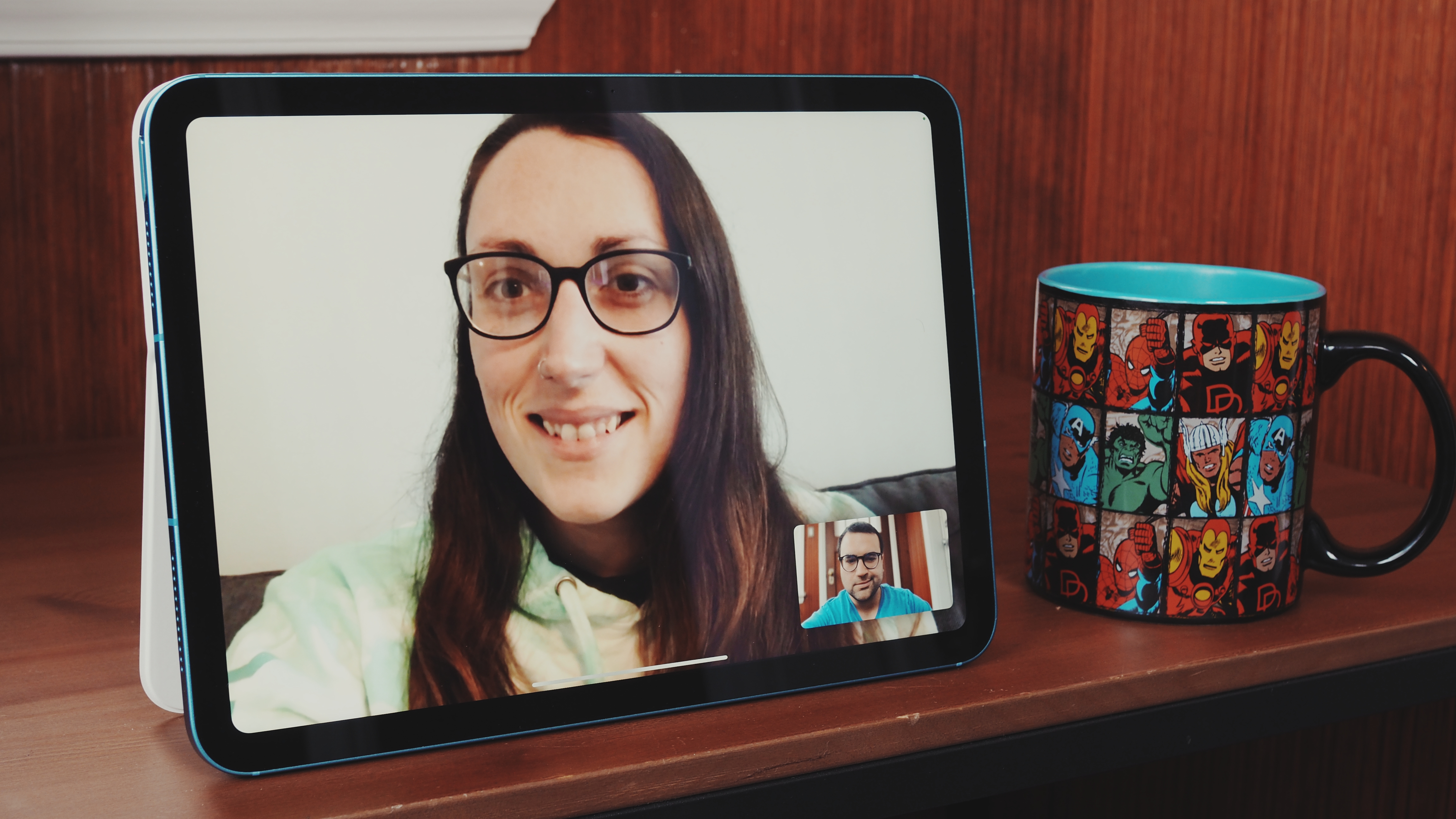
Cameras on the iPad — especially the standard iPad — tend to get overlooked, but the iPad (2021) surprised us all when it got a fancy new front-facing camera with Center Stage. However, you'll remember that the rear camera got absolutely no love, but finally, that's changed.
The iPad (2022) has the same single camera found on iPad Air, which is a vast improvement. The 12MP sensor, along with the ƒ/1.8 aperture, will be a huge boon to anyone who prefers taking photos on their iPad. In testing, it has wielded similar results to the iPad Air, meaning you can take some lovely photos when the lighting conditions are right. Plus, Apple has included its Smart HDR 3 software in the new iPad, meaning that some of Apple's pretty excellent computational photography will make your pictures look as good as possible. Still, I'd warn any would-be iPad photographers out there of the dangers of shooting in low-light conditions; the shot just won't turn out even with the upgraded camera.
Another long overdue upgrade that comes with the new rear camera is the ability to record 4K video at 24 fps, 25 fps, 30 fps, or 60 fps. I know iPads are loved by many as home video cameras because the large screen allows you to see what you're capturing as you're filming it — now you can do that in 4K.
The 12MP wide camera on the back finally comes to the base iPad
While there have been no technical changes to the front-facing camera, it's still the same 12MP Ultra-wide camera that can use Center Stage to keep you in the middle of the frame as you FaceTime or video chat; it has one big difference.
Apple has finally moved the placement of the selfie camera along the side, meaning when you use the iPad in landscape orientation, the camera should be on top, provided you don't have it upside down. This has made my video calls and meetings much more enjoyable because it makes looking at the screen a tad more natural and improves Center Stage, in my experience. It does a better job of keeping you in the center of the frame when you move side-to-side than the old placement did, and it absolutely makes no sense why the iPad Pro (2022) announced alongside the 10th-gen iPad wouldn't have this new camera placement.
Regardless, this is a very small but helpful change that people who love to video chat (or have to for work) will enjoy. I have to imagine this change will come to the entire iPad lineup in the future.
iPad (2022): Apple Pencil and other accessories
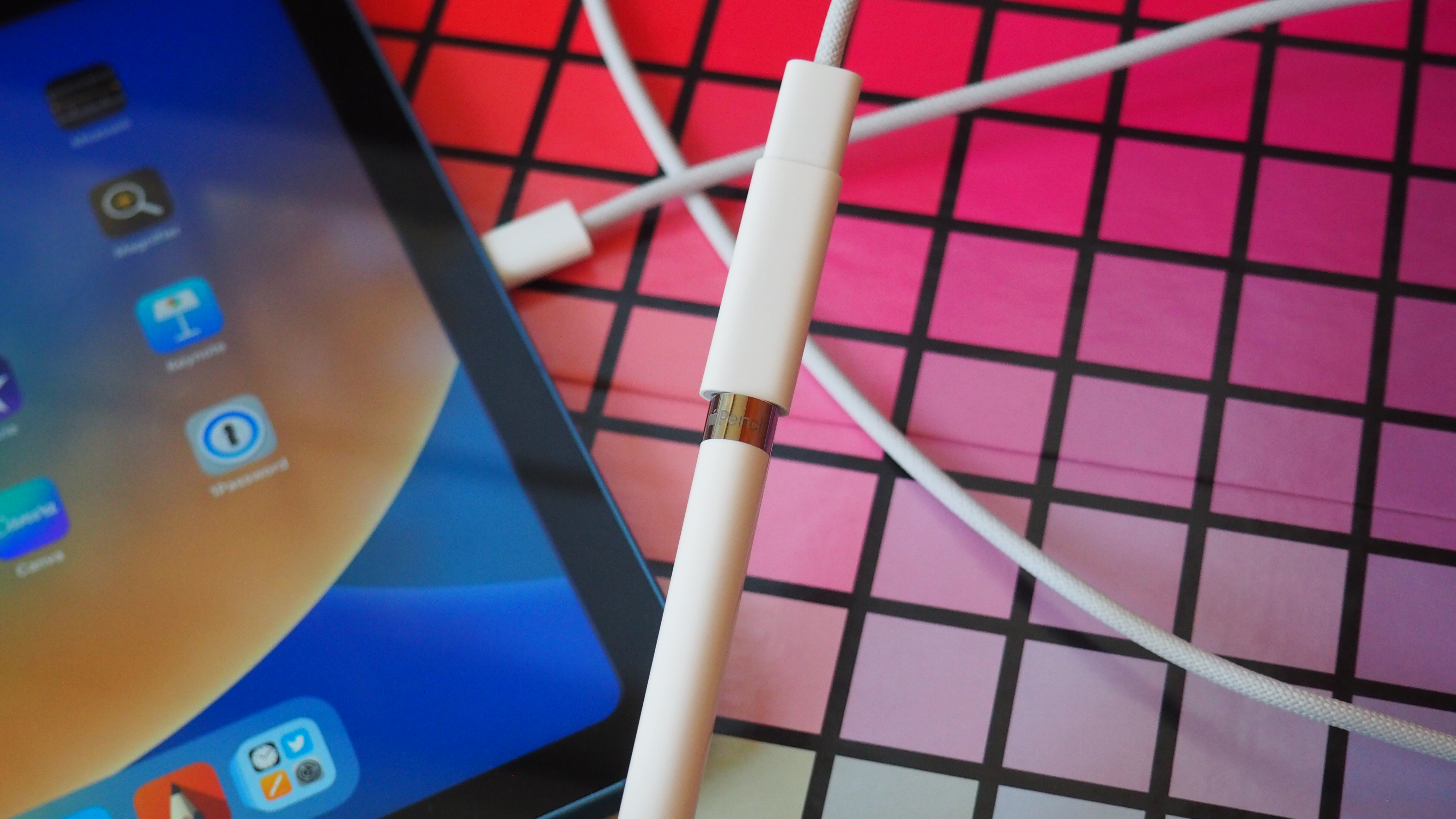
While I applauded the addition of the USB-C port to the iPad (2022), I haven't yet talked about the most baffling feature of Apple's new 10th-gen tablet.
Like the previous generation of the baseline iPad, this new version comes equipped with Apple Pencil (first-generation) compatibility, meaning you get the same artistical abilities you've come to expect with the iPad. The problem is that the first-generation Apple Pencil has a Lightning connector and can't be charged wirelessly like the Apple Pencil 2. So what's Apple's solution to a USB-C iPad that uses a Lightning Apple Pencil? A dongle, of course.
A dongle by itself is certainly not the worst thing in the world; Apple users have been using them for years, but this dongle takes inefficiency to a new level. The dongle Apple is selling for an extra $9 consists of two ports, meaning you have to plug in your iPad to a USB-C cable, then into the dongle, and then connect your Apple Pencil (pictured above).
I have no idea how Apple somehow made charging an Apple Pencil on the standard iPad worse than before, but they managed it — it's awful. It's not user-friendly and makes charging your Apple Pencil on the go much harder. Apple charging $9 for a half-baked solution to a problem that was one of their own creation isn't an incredible sight to see, but there is some good news. The extra fee to buy the adapter for people who already have the 1st-generation Apple Pencil. If you're new to the Apple Pencil, new versions of the $99 stylus will come with the adapter.
I suppose upgrading the iPad (2022) to have Apple Pencil 2 support would have complicated the iPad lineup even more. It may not be possible on a non-laminated display to use an Apple Pencil 2 to achieve the desired effectiveness. I would also guess that making a brand-new Apple pencil (1st-gen) with a USB-C connector on it would have also been cost-prohibitive for both Apple and consumers. Yet, I still fail to see why Apple couldn't have made at least made a male-to-female connector so you wouldn't have to carry a USB-C cable with you everywhere you go in case your Apple Pencil dies.
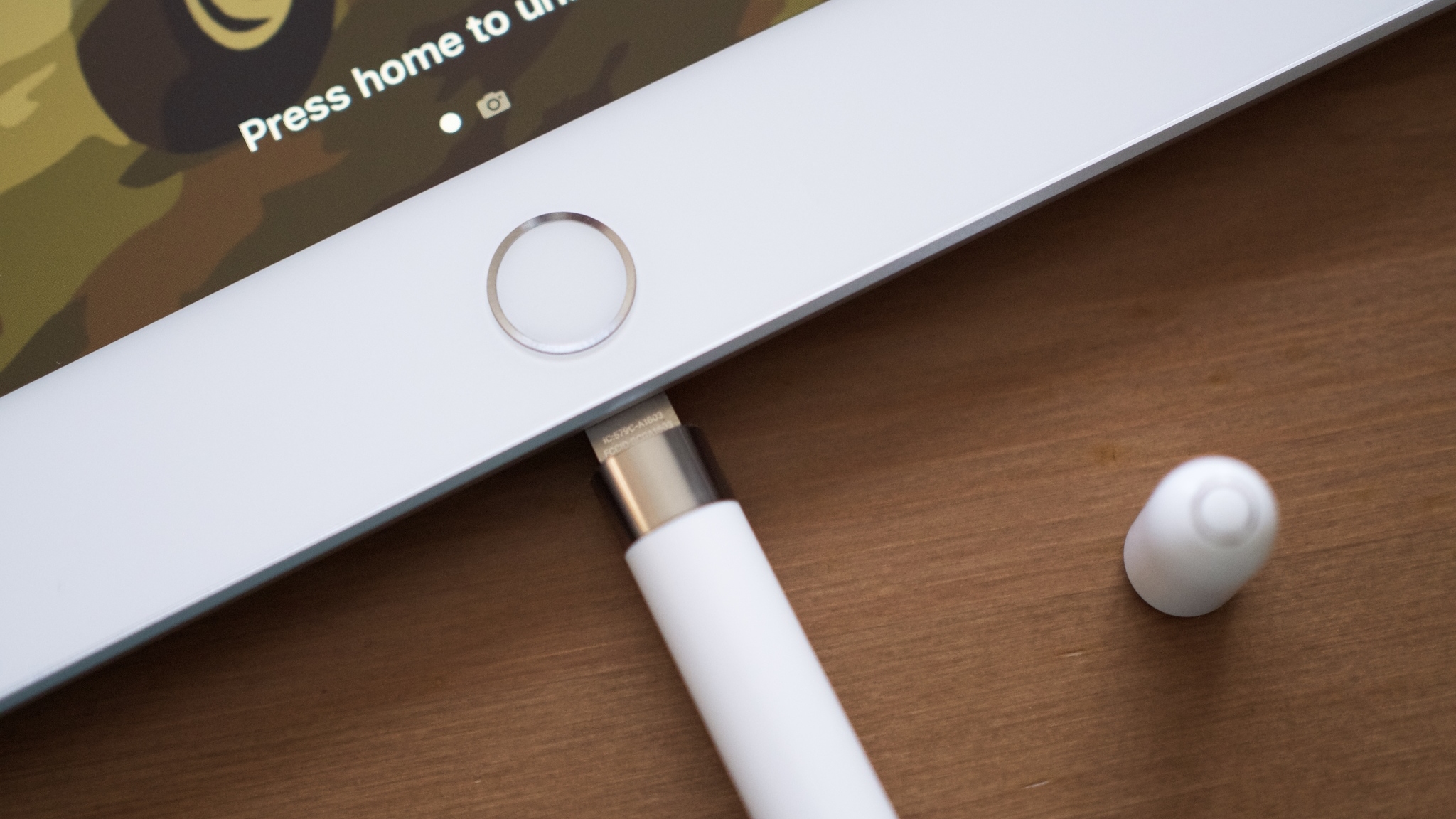
While I am genuinely baffled at Apple's actions in this instance, I am trying to remember that plenty of people have absolutely no need for an Apple Pencil at all. It's already a $99 add-on itself, and while I love the extra utility it gives me while navigating my iPad, it remains primarily a tool for artists and extensive note-takers.
The good news is that it works just like the Apple Pencil you know and love and can still do all the great drawing, sketching, painting, and note-taking in your favorite iPad apps.
Along with the Apple Pencil, Apple has finally given the iPad its own magic keyboard, which only works with the iPad (2022). The Magic Keyboard Folio provides a fantastic way to type for any who likes to do a lot of work on their iPad. Plus, it even has a trackpad which is a great way to navigate your iPad more like a laptop. That's all familiar from the Magic Keyboard for the iPad Air; the two-piece design is unique to the Magic Keyboard Folio.
That's right, the keyboard part that attaches to the Smart connector is located on the side of the 10th-gen iPad and is separate from the back cover that houses a kickstand that magnetically connects to the back of the iPad. It's a super neat and expensive accessory that feels great. I plan on reviewing it on its own once I've had a little more time with it.
iPad (2022): Competition
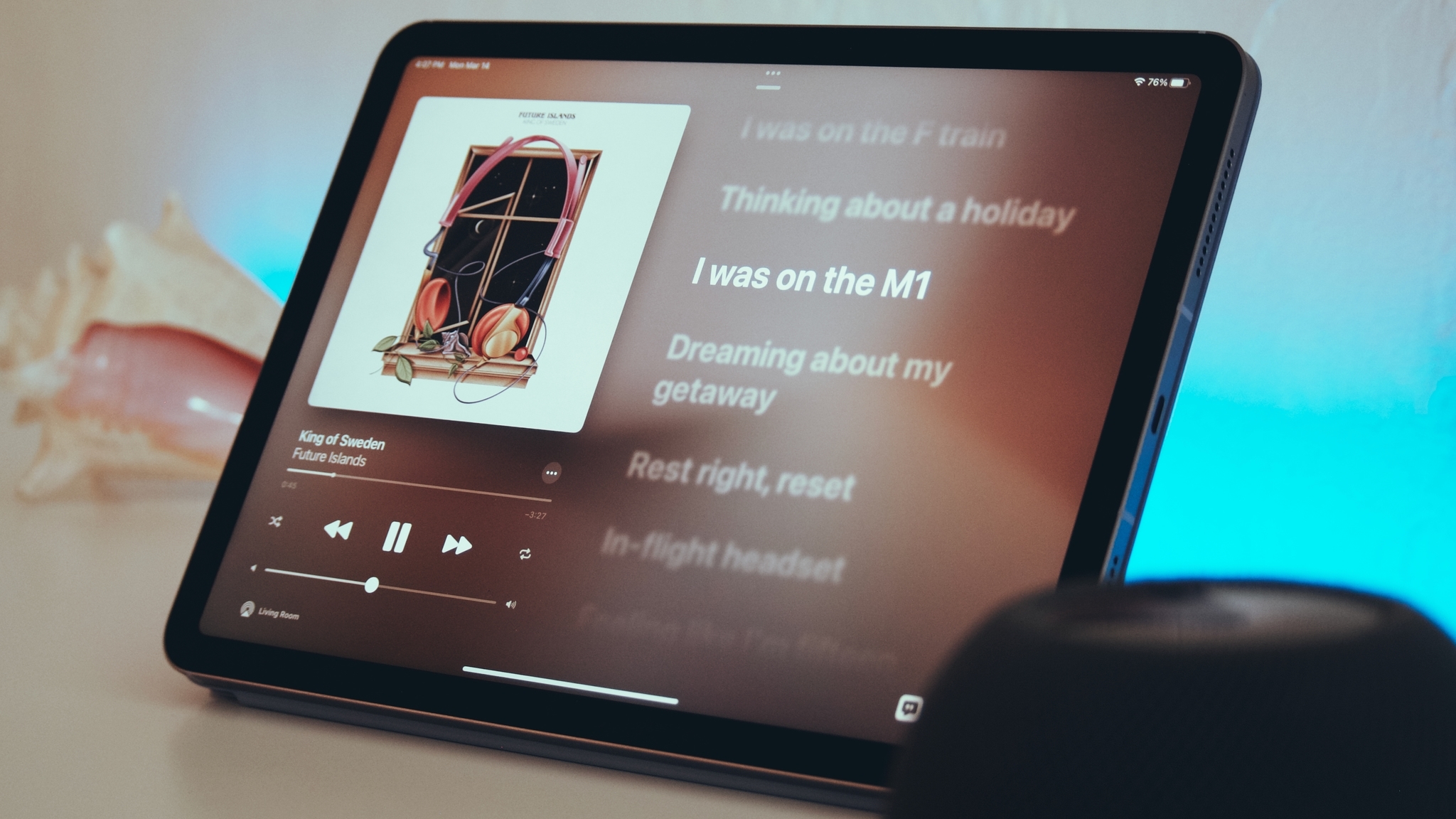
Regarding any iPad, I firmly believe that Apple is always in competition with itself, and the iPad (2022) is no different. Obviously, the iPad (2022) and the iPad Air 5 will be compared (as I have done so many times in this review) because of all their similarities. Add in the fact that the iPad (2022) is a whole $150 cheaper, and now the conversation starts to get really spicy.
Will the M1 chip in the iPad Air 5 benefit you significantly, or will the A14 be enough? The truth is, if you're asking yourself that question, you likely know that the answer is the 10th-gen iPad will be just fine for your needs. Are you an artist who needs the improved precision of the Apple Pencil 2? That will only be available if you dish out the extra cash for the iPad Air. Add in a fully laminated screen, and that $150 doesn't seem like a stretch for the right person.
Of course, the iPad (2022) has some advantages over the iPad Air as it stands now. The new front-facing camera placement makes chatting on video calls much more pleasant and feels more natural. I would strongly argue that the Magic Keyboard Folio is a more versatile and valuable keyboard than the Magic Keyboard available for the iPad Air.
Complicating matters even more is the fact that you can likely find some of the best iPad deals on the iPad Air 5 — especially with the holiday season just around the corner.
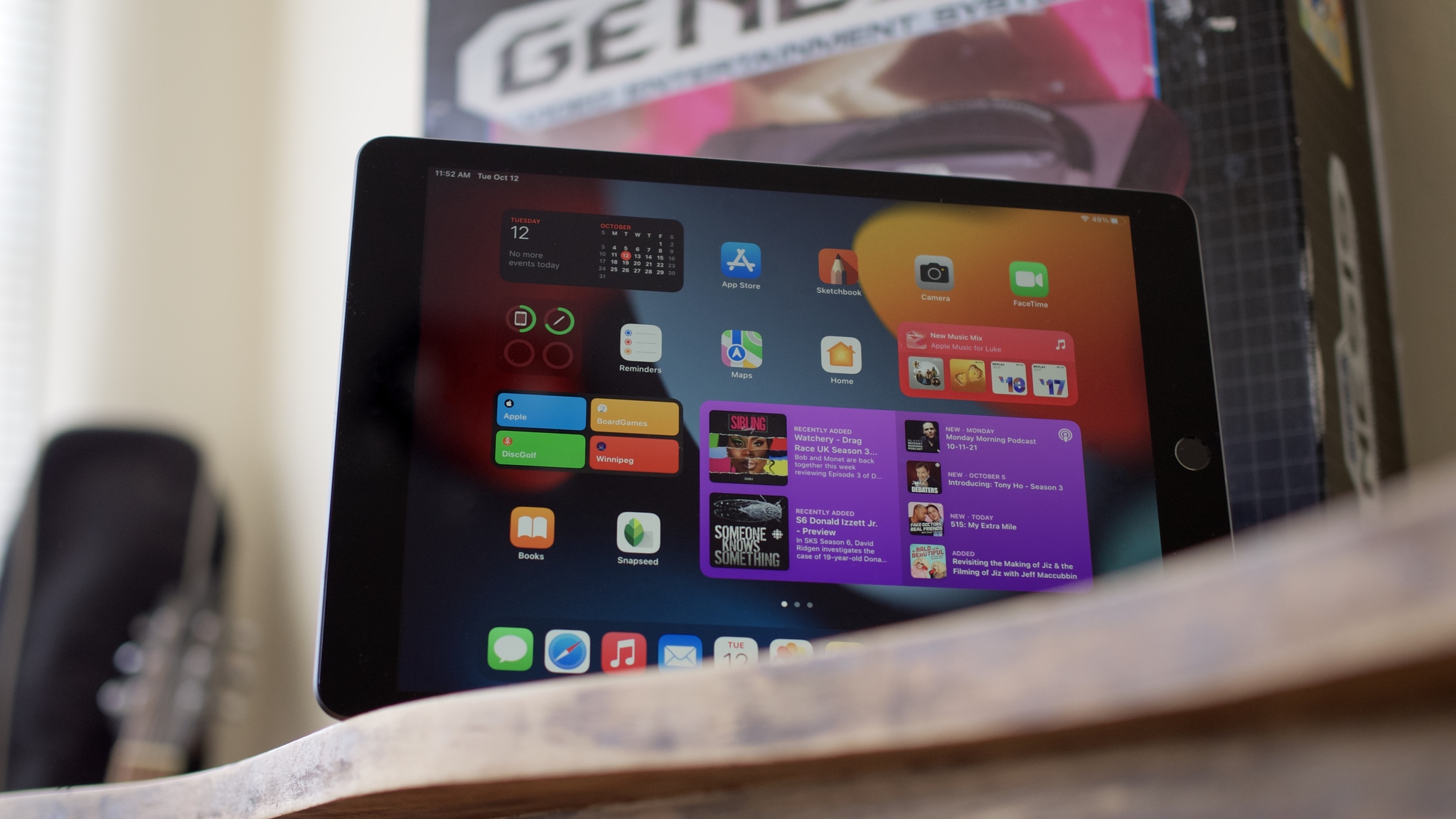
Don't forget the iPad (2021) either, as Apple has wisely chosen to continue selling it for the time being. This is still the true budget tablet, maintaining that $329 price tag (although it has gone up in price in some countries) that makes the base iPad so dang appealing.
There's no doubt that the 9th-gen iPad is a step down in terms of power and performance, albeit it's not that huge in practice. The rear camera is abysmal, and the old design hasn't felt fresh in many years; however, sometimes something familiar is better.
It's the only iPad left with a Home button and a headphone jack, which could make the iPad (2021) a compelling product to snatch up before it's gone.
iPad (2022): Should you buy?
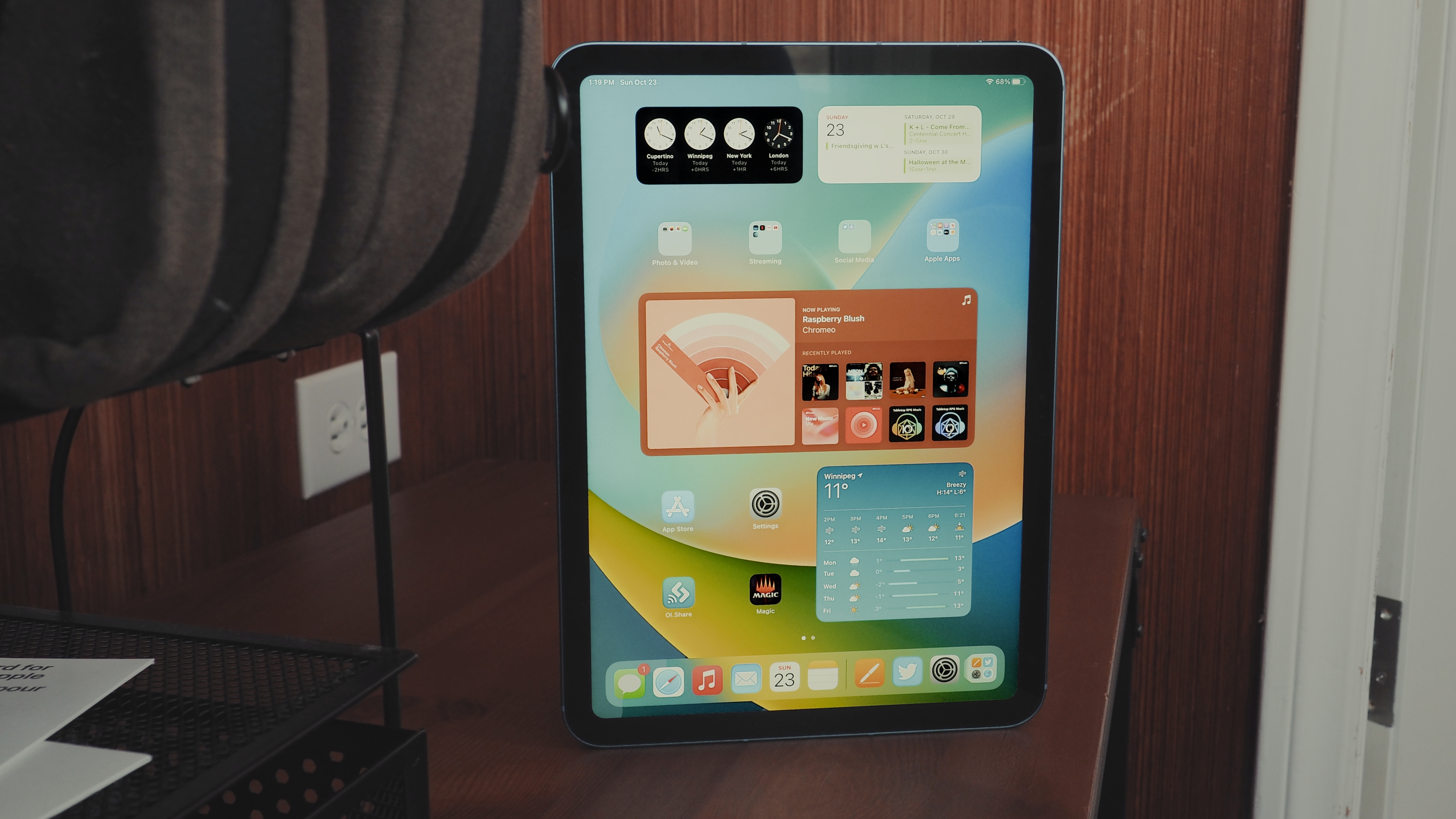
You should buy the iPad (2022) if...
• You want the cheapest iPad that has the minimal-bezel design
• You spend a lot of time on video calls
• You don't need an Apple Pencil 2
• You don't need the M1 chip
You shouldn't buy the iPad (2022) if...
• You need an M1 chip for your work flow
• You can't stand non-laminated displays
• $449 isn't a worthy price point in your eyes
iPad (2022): Verdict
The upgrades over its predecessor are pretty numerous, from the complete redesign to better cameras, a nice internal power boost, and the USB-C port are all welcome changes to an iPad that was in desperate need of some love. It's nice to see Apple celebrating the iconic iPad and paving a new course for the device, much like the iPhone X some years ago.
Yet, not every change is something I can herald as a shining beacon, as some of the decisions Apple has made with the new iPad are quite perplexing.
For starters, the Apple Pencil needing a dongle to be charged by the iPad is downright lunacy. It's not a practical solution for anyone and makes those times when you have to charge your pencil on the go much more frustrating.
Another change for the worse is the $449 price point is odd because it takes the 10th-gen iPad out of the conversation of being the best budget tablet on the market, a title the standard iPad has held for a long time. It's not even so much that I think $449 isn't a fair price for an iPad (2022), so much as I can't help but feel the apple pie slices that Tim Cook and Co. are serving are getting too small. How big can the market be for an iPad with an M1 chip but none of the other advantages of the Pro when the iPad (2022) exists? My bold prediction is that Apple has repurposed the new iPad to take over the Air to simplify the lineup down the road. The iPad Air will fade off into the distance, and we will be left with an iPad mini, iPad, and multiple iPad Pros.
All in all, though, the 10th-gen iPad is a stellar tablet and showcases some small but highly-attractive new features that I'm sure will come to the iPad Pro (and the iPad Air if it sticks around) at a later date. The landscape camera placement makes much more sense and feels much better to use when using FaceTime or sitting on a Zoom call. And that Magic Keyboard Folio is so much more versatile than Apple wants out for the iPad Pro right now that I'm surprised the iPad Pro (2022) didn't get its own version.
The iPad (2022) has come into the iPad lineup like a wrecking ball, destroying everything in its path. What's left to stand in the rubble is a pretty great tablet, with only a couple of annoying drawbacks.
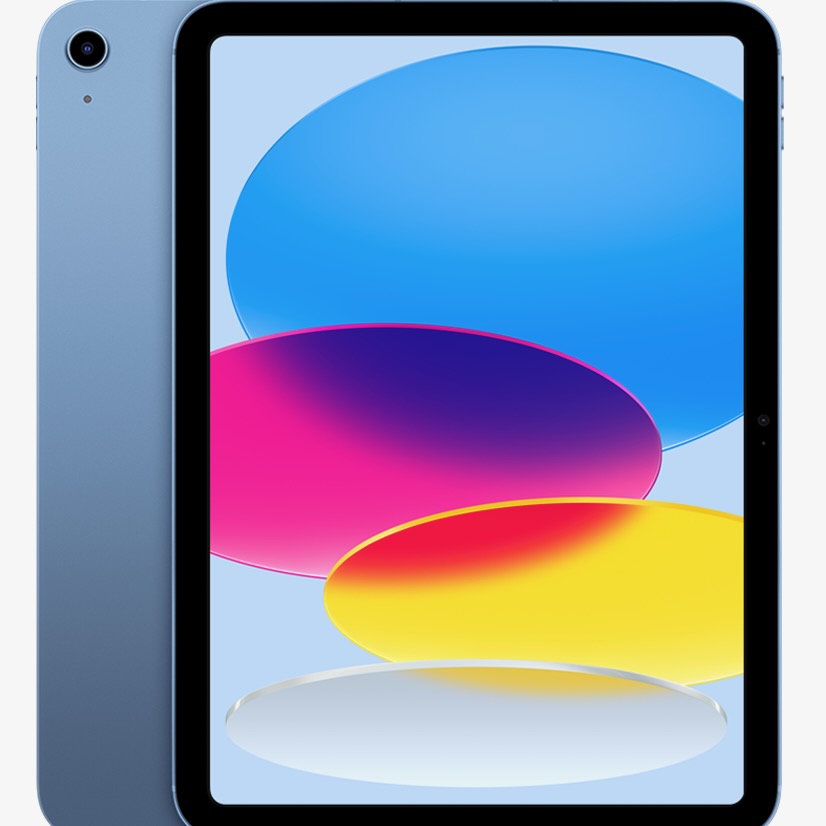
The future of the iPad
Even though its hard to imagine what Apple was thinking when it concocted the Apple Pencil dongle, the 10th-gen iPad is a pretty massive upgrade of its predecessor. Plus, with a better front-facing camera placement and a better Magic Keyboard, it's hard not to look at this device as the North Star in terms of where the iPad lineup as a whole is headed.

Luke Filipowicz has been a writer at iMore, covering Apple for nearly a decade now. He writes a lot about Apple Watch and iPad but covers the iPhone and Mac as well. He often describes himself as an "Apple user on a budget" and firmly believes that great technology can be affordable if you know where to look. Luke also heads up the iMore Show — a weekly podcast focusing on Apple news, rumors, and products but likes to have some fun along the way.
Luke knows he spends more time on Twitter than he probably should, so feel free to follow him or give him a shout on social media @LukeFilipowicz.
